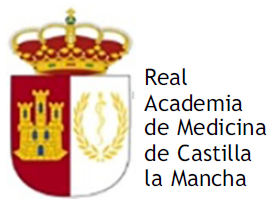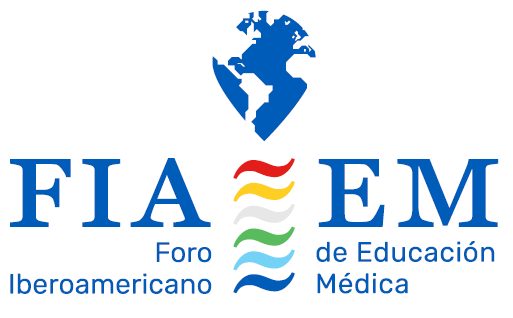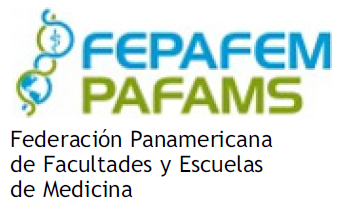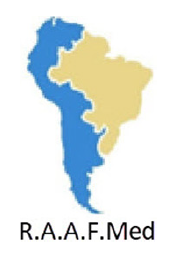Transitions in medical education are moments of intense learning, bringing significant challenges for the trainees, the medical programs and healthcare provision. Frequently, transitional periods are not prepared or mentored; this process of transformation in the trainee is left to occur by chance and opportunity. Promotion of medical education continuity requires formal support in the continuous process of learning and professionalization. This is a review of the formal transitional periods in medical education considering the most significant points of transition. The challenges of each period of transition are analyzed and strategies for improvement are discussed. Educational strategies should not be directly translated to other settings; however, they need to be adapted to the cultural context of medical training to be effective. Research on transitions, considering the socialization process and the cultural environment, should be performed to better support the medical professional pathway.
Las transiciones en la educación médica son momentos de aprendizaje intenso y desafíos importantes para los alumnos, los programas médicos y la prestación de servicios de salud. Con frecuencia, los períodos de transición no se preparan ni se orientan; este proceso de transformación en el aprendiz se deja que ocurra mediante el cambio y la oportunidad. La promoción de la continuidad en la educación médica requiere un apoyo formal en el proceso continuo del aprendizaje y profesionalización. Esta es una revisión de los períodos de transición formales en la educación médica, considerando los puntos de transición más importantes. Se analizan los desafíos de cada período de transición y se discuten las estrategias de mejora. Las estrategias educativas no deben trasladarse directamente a otros entornos. Sin embargo, deben adaptarse al contexto cultural de la formación médica para que sean eficaces. La investigación sobre las transiciones, considerando el proceso de socialización y el entorno cultural, debe realizarse para apoyar mejor la trayectoria del profesional médico.
Transitions are significant periods in the continuum of medical education, that are frequently associated with high levels of stress, and which may affect the learning process.1 During the educational pathway trainees face recurrent transformations of their professional roles and identities. Moving into a new, clinical context with increased responsibilities and experiential learning opportunities is motivating but is also associated with growing stress and anxiety.2 After medical school, the transition from undergraduate to postgraduate training is an important transformation where medical students’ identity changes to accommodate all the new professional responsibilities and requirements in maintaining the quality and standards in delivery of medical care associated with being a physician. Working and learning in the clinical environment throughout different stages of education and professional development involves recurrent transitions where trainees need to manage not only shifting or increasing complexity of clinical work, but also relationships with new people in the workplace.3 Moving from one workplace, team, or specialty to another and to find one's place and space physically and socially repeatedly is a challenge for students and trainees.4 Even doctors who have been qualified for a time, describe feelings of confusion and uncertainty in phases of transitions, for instance to new positions or as newcomers to a clinical work environment.3 These phases of transition may impact not only the wellbeing of students and trainees with increasing burnout and anxiety, but also the quality of care. Although there are some variations in the structure of the educational pathway to becoming a medical doctor worldwide, the moments of transition tend to happen at similar moments delivering similar challenges.5 As a result, there is a growing concern for the mental health of medical students and physicians in their early career. Therefore, it is essential to identify strategies to prepare students and trainees for the inevitable transitions they will experience, as well as strategies to guide and support them through these critical phases through orientation and formal training. Transitions are generally under looked at periods where learning and professional development are left alone to occur. These are blank spaces in terms of learning orientation that medical schools and postgraduate programs should fulfill with the guidance and support that students and trainees need.
The challenges of transitionTransitions in medical education may be defined as “a period of change in which medical students or medical doctors experience some form of discontinuity in their professional life space, forcing them to respond by developing new behaviors or changing their professional life space in order to cope with the new situation”.3 The process of transition is thought to be influenced by three main factors which include personal characteristics, task readiness and contextual factors. Can these factors be accounted for in educational design to improve the experience of transition? Personal characteristics are difficult to modify, however, support and mentoring may have positive effects on its adaptation to the process of change.6 Clinical performance, which includes the capacity to perform tasks related to the role, can be addressed by improving knowledge and skills education before and during the transition period.4 The influence of contextual factors such as organizational culture, on the process of transitions is frequently under addressed. Cognitive load theory shows that there is a maximum load of information that can be processed at the same time through working memory.7 This is especially important in transition periods where many technical and contextual new factors appear to the student or trainee, increasing the complexity of their demanded performance. There is extensive literature on the detrimental effects of transitions to students and trainees, reporting high levels of stress, anxiety, and burnout.1,8 Some reports even show the effect of the transitions in patient care and safety.9 However, professional culture where the transitions take place are not frequently studied, despite being recognized as a determinant factor in the process of socialization of trainees and having potential impact in care providence. Moreover, most of the research around transitional periods comes from North America, United Kingdom and Australia, so the realities and the conclusions may not be directly generalizable to other contexts and other countries. There is a lack of knowledge and research about transitions in other countries such as Portugal.
In medical training, transitions frequently include changing from an organization to another, this process of changing to a new institution is both individual and social. It requires mastering task performance, understanding its own role and socially integrating in the group. The way this process is conducted by the organization is very important to the outcome, both for the person and for the organization.10 Most of the studies on transitions are based in the psychology theories which explore the individual experience of transition. These approaches tend to ignore the impact of socio-cultural environment on the shaping and experiences of transitional phases in medical training and career trajectories. The process of becoming a physician includes internalizing the culture of medicine, which involves acquiring a group of beliefs, responsibilities, and traditions. During transitions, the newcomer uses several strategies, including imitating role models and habituations to new patterns of behavior.11 This development is conveyed by both formal curricula and informal processes, and on occasion messages from the curricula may conflict with the learning from the learning environment and clinical practice. Students and trainees need to adjust to their new environments and incorporate new roles.2 The construction of professional identity comes as a consequence of professional socialization, a process that is intertwined with the organizational dynamics and structure of the healthcare system. The concept of anticipatory socialization states that persons acquire the behaviors of a position before occupying that position and this process can be mentored and oriented.12 Often, this process of socialization is left unacknowledged in the medical education pathway and trainees are left to cope with the changes to their professional identity and associated roles, which can be particularly anxiety-producing due to multiple forms uncertainties that arise.13
The organization of medical education training pathways vary across the world, but six main routes were identified, which may include variably secondary school, bachelor degree, medical school, internship, mandatory service and residency. Most students enter medical school after secondary school, while in some countries graduate-entry (following a University Bachelor's degree as a minimum) is required. After medical school, some doctors require a period of practice (internship or foundation program) before specialty training and after that the postgraduate training varies in length.5 Additionally, transitions can be more challenging to minority groups with reported less social support, less positive learning environments and discrimination.
Looking at transitions in medical education as a moment of discontinuity affected by individual and contextual factors is important to understand the requirements of local needs assessments strategies to inform the design of transition support programs.
Strategies to support transitionTransition to medical schoolTransition from secondary school to medical school is the first moment of transformation students experience in the medical education pathway. Frequently, students need to adapt to learning methods that can be significantly different from what they have experienced before, leading to increasing levels of anxiety and stress.8,14 In a Brazilian study, first year medical students reported several stress-inducing factors related to this period concerning not only the academic work but also the necessity to cope with a change in their personal life which included an excessive number of activities, lack of organization and lack of support in the induction process.
Perspectives on the transition to medical school can be different depending on the method of selection and criteria for admission, undergraduate medical students face different challenges in transition compared to already graduate medical students.15 Students that come from minority groups and socially deprived backgrounds need specific approaches to cope with transition.16 Many countries are widening access programs seeking to increase representation of the population in the medical student community, an increasing number of students from socially deprived communities are gaining entry to medical schools, and the topics are becoming more prevalent and important. Strategies to improve integration and wellness of students in the first year of medical school, need to be adapted to the population of students and the institution where it occurs.
Reports show that programs of peer mentoring, with cross-year students, were recognized as effective means to provide support.17 Other strategies including mindfulness strategies have also been used with results showing reduction of burnout and stress.18 However, there are few reports of methods used to support the beginning of medical school, this is a crucial period of adaptation which may have important effects on student present and future wellbeing and performance.
Transition to clinical yearsTransition from university-based education to clinical training is a well -studied period of the educational pathway. Traditionally curricula are organized in pre-clinical years and clinical years, this separation tends to be less evident with spiral curricula, however, that is still current in most medical schools. There is extensive literature on the transition to clinical years, reporting increased levels of stress which may inhibit learning.2 Research shows that knowledge and skills from pre-clinical training do not predict the performance in the transition to clinical years.4 Therefore, promoting adequate knowledge for the transition is not enough to support students during this period. Students need to develop task mastery and simultaneously develop role clarity, acculturation, and social integration.19 Reported negative experiences in the transition were related with socialization processes and workload.20
The clinical environment is intrinsically different from the medical school academic environment. In the hospital, learning includes the working routine which is often unpredictable. Students need to adapt to a changing environment where they are marginal participants at the beginning. Social environment of the clinical setting can challenge the capacity of students to develop the sense of belonging necessary to foster their knowledge and fully integrate.21
Another challenge that may appear in this transition is the frequently conflicting reality between what has been taught in the medical school and what happens in the real setting. This applies to application of theoretical knowledge but also with professional attitude and interprofessional collaboration.22 Students may identify important gaps between what they have learned in the classroom and what happens in real world,1 causing them to feel lost and struggling to develop their own professional identity.
Some topics have been described as important to the process of socialization and application of knowledge during this transition, including: a gradual integration of foundational and clinical knowledge; clinical exposure in the pre-clinical years; clearly state learning goals; clarify roles for both students and educators; early identify possible barriers in this transition; developing programs of clinical mentoring and near-peer support; and developing transitional programs.2
Several strategies were described in the literature to support the transition to clinical years, some of those with focus on the socialization process. Kitto et al.,23 reported a group of seminars to support transition to clinical years by addressing sources of uncertainty, to support understanding the environmental and social conditions that foster uncertainty aiming to use it for learning. Other strategies were described to address adaptation to the clinical setting. Measuring the learning environment can also be useful to better understand the reality of clinical placements and may work as a starting point to develop strategies for support and educational programs for clinical supervisors.21 In the present, increasingly integrated curricula eased this transition, however, it is still important to particularly address the social and environmental factors surrounding this transition for medical students.
Transition to postgraduate trainingFinishing medical school is one of the most challenging transitions in the medical education pathway. The period of transition to clinical practice is variable across countries, with some having direct passage from medical school to residency training, having foundation training or internships before that and others having no formal pathway defined.5 Researchers in several different areas studied the transition from education to work, highlighting the stress associated with this transition, the designated ‘transition shock’. There are a great number of social rules and norms that are unknown to the young professional, which may bring a significant level of uncomfort and anxiety, while the young professional needs to seem confident and reliable.24 Additionally, there is also evidence that this transition has important implications for patient safety.
Medical trainees beginning residency need to balance between service and learning, they need to adapt to the increasing responsibilities of working as members of the healthcare team but still receive supervision, training, and assessment.25 The negative aspects associated with this transition are related with the change of support, geographical relocation, reduced supervision and lack of social integration. Different perspectives on the degree of supervision versus autonomy were also identified between supervisors and trainees.26 Trainees reported feelings of confusion, of groundlessness and ambiguity, particularly in the first months.25 These experiences may have a deep impact in the progression of training, in the well-being of the trainees and may lead to withdrawal of the programs. Some studies across the UK and New Zealand, focused on the preparedness to practice of the first year's medical doctors.25,27
Medical school curricula have an important role in preparing the transition to practice, several reports from the trainees identify their necessity to have increasing workplace-based learning and more exposure to real world clinical settings.28 The final year of medical school is a particularly important period, where students are predominantly in clinical settings and have higher integration in medical teams. Several studies reported knowledge topics where trainees in transition reported need to develop skills, such as clinical reasoning, medical emergencies, team communication, handovers and breaking bad news.28 Simulation can be used to improve preparedness in some topics that are identified, and simulation-based education can contribute to ease the process of transition.29 Boot camps and induction courses are also described as useful strategies to support and elicit clinical skills over transitions.30
Besides knowledge and skills, questions around well-being and reasons for withdrawal in first year residents were less explored.15 However, data shows that there are some factors that can be improved, which greatly influence the transition of trainees to residency. The preparation by the medical school with adequate knowledge and skills is essential, however, there is also an important need of support providence from all the healthcare workers (senior colleagues and other professionals) and support from family and friends.31 During this transition the trainee needs to develop professional identity and resilience to deal with the new role. This process needs to be guided and supported, not being left to occur by chance.
Given the importance of self-directed learning in postgraduate training, students that came from PBL based curricula were more comfortable with autonomy and independent learning, so background education can affect the ability to transit to postgraduate education. Introductory induction courses are also frequently used strategies to learn context specific routines and meeting the staff which seemed to have beneficial effects.3
Transition to independent practice as a specialistThe transition to independent practice is the process of passing from being a resident to becoming an autonomous physician. This is a moment of transition to fully autonomous practice where physicians need to adapt to new roles as part of the health team, incorporate new responsibilities, often adapt to a new institution and to several professional roles.
Research on the reported confidence of final year residents in general surgery have variable results, from reporting residents report lack of confidence and support to independent practice32 to results confirming confidence and satisfaction.33 Confidence is a fundamental achievement to cope with the challenges of transition to practice. Some characteristics of the residency programs associated with supporting for transition were providing autonomy and safe independence; flexible individualized curriculum; effective mentoring; opportunities to build confidence for procedures; having experience with “own patients”; practice the continuity of care and interprofessional work and having the chance to practice management skills.34
Several specific interventions have been used to address the knowledge and skills gaps over these moments of transitions.35 Fellowships are also used to pursue studies in a particular field of Medicine and a strategy to mastery skills.32 Residency programs that include attentive and proactive mentoring can support a safe and smooth transition.33 Isolated initiatives may be useful to support some aspects of learning, however, all program design should include longitudinal global measures to support transitions from curriculum planning to assessment. There is a growing interest around designing global strategies to improve transition and to promote lifelong learning.
Using previously published strategies to improve transitions, such as these aforementioned can be useful to address transitions, but the local contextual factors need to be accounted for to inform the design of clinical transition support interventions. The local history, structure and culture of medical education settings all need to be acknowledged and investigated through local needs assessment. Programs need to understand their own contexts by using perspectives of their own stakeholders (i.e. students, patients, clinical instructors, nurses and allied healthcare professionals, and educational researchers) to identify potential issues, local educational needs, and assessment approaches to account for context. This will able educators and healthcare managers to design and implement better transition experiences for doctors in their professional pathway.
ConclusionPeriods of transition are often seen as moments of struggle, where students and trainees need help with palliative measures to survive and manage the unavoidable discomfort of change. However, the opportunity to grow over these periods of transition is rarely explored, by directing educational activities to act as enhancers of learning over the process of transition. The process of socialization is very important to promote support - creating orientations, clarifying roles, training supervisors, and providing support mechanisms is essential to smoother transitions. Characteristics of the students and of the program and institution, in particular culture, history and structure need to be accounted for in the design of educational transition programs. Transition periods can be used to improve learning and resilience through recognizing its challenges and opportunities.
Conflicts of interestAll authors have no conflicts of interest to declare.








